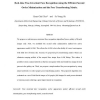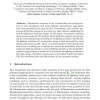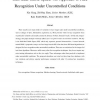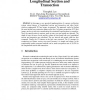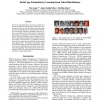156
click to vote
AR
2011
14 years 7 months ago
2011
We propose a real-time pose invariant face recognition algorithm from a gallery of frontal images only. First, we modified the second order minimization method for active appearan...
122
Voted
ACCV
2010
Springer
14 years 7 months ago
2010
Springer
Abstract. In set-based face recognition, each set of face images is often represented as a linear/nonlinear manifold and the Principal Angles (PA) or Kernel PAs are exploited to me...
161
Voted
ICISC
2009
14 years 10 months ago
2009
Abstract. Automatic recognition of human faces is becoming increasingly popular in civilian and law enforcement applications that require reliable recognition of humans. However, t...
164
click to vote
ECCV
2010
Springer
14 years 10 months ago
2010
Springer
Abstract. Illumination variation is one of intractable yet crucial problems in face recognition and many lighting normalization approaches have been proposed in the past decades. N...
119
click to vote
TIP
2010
14 years 11 months ago
2010
—We address the problem of face recognition by matching image sets. Each set of face images is represented by a subspace (or linear manifold) and recognition is carried out by su...
127
click to vote
PAMI
2007
15 years 1 days ago
2007
While recognition of most facial variations, such as identity, expression and gender, has been extensively studied, automatic age estimation has rarely been explored. In contrast ...
111
click to vote
TNN
2008
15 years 13 days ago
2008
There usually exist many kinds of variations in face images taken under uncontrolled conditions, such as changes of pose, illumination, expression, etc. Most previous works on fac...
143
Voted
TIFS
2008
15 years 13 days ago
2008
We present a theory for constructing linear subspace approximations to face-recognition algorithms and empirically demonstrate that a surprisingly diverse set of face-recognition a...
136
Voted
DICTA
2003
15 years 1 months ago
2003
In this paper, a new practical implementation of a person verification system using features of longitudinal section and transection and other facial, rotation compensated 3D face ...
119
Voted
AAAI
2010
15 years 2 months ago
2010
One of the main difficulties in facial age estimation is the lack of sufficient training data for many ages. Fortunately, the faces at close ages look similar since aging is a slo...
